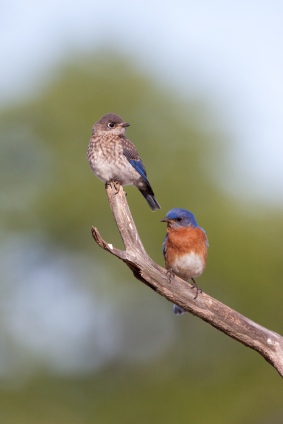-
some fun blue bird houses
Whimsical, yet totally functional, these hand carved wooden blue bird houses provide real nesting and roosting sites for feathered friends. Now mind you, they’re not really bluebird houses that Eastern Bluebirds are likely to use, but just plain fun blue bird houses!
Complete with clean-outs, entrances are proportionally sized for chicka
dees, finches, wrens, nuthatches and other small cavity-dwelling birds. Paints and finishes are non-toxic, and the wood is a fast-growth type, and renewable resource.
Entice wild birds to take up residence in your yard by providing birdhouses for them to raise their young. Clearly, they needn’t be a boring cedar box. Add charm and color to the landscape with fun and functional blue bird houses. As always, a birdbath filled with fresh water will attract more birds than you’ll believe. It’s the single most effective way to entice feathered friends to your place. And for the holidays…fun birdhouses make for an excellent gif
t for any birding enthusiast or nature-lover on your list. A gift that actually gets used and enjoyed for many seasons, while providing a valuable resource for Mother Nature’s beaked buddies!
-
bluebird houses alone may not cut it
The “Bluebird of Happiness” is one special little songbird that many backyard birders try to entice to their yards. The task can sometimes prove fruitless without the right combination of elements.
First there’s shelter, in the form of nest boxes, or bluebird houses. But don’t expect success with just slapping up a house. Proportionally-sized for Eastern and Western Bluebirds, these houses have certain features required for a successful brood. A predator guard is a plus, and having a duplicate bluebird house nearby may help with the fierce competition by non-native birds like the House Sparrow. Placement is important too, as Bluebirds prefer their nest boxes in open spaces. Shelter also involves cover, protection from predators in the form of mature trees and shrubs.
Now bluebird houses can run the gamut from your basic nest box (which serv
es the purpose well) to detailed copper roof houses, and decorative artisan’s works. The main thing is proportion and size, and drainage. Some bluebird houses will have a raised screen on the floor to prevent parasites, others have built in predator guards, and some have clear acrylic viewing windows to check the progress of nestlings without disturbing them. Some may have all these features, while others may have none of them. You usually get what you pay for in this instance, but again, a basic nest box will
likely do the trick.
Next is the feeder…Bluebirds are not seed eaters, and are not very likely to frequent this type of bird feeder. Traditional bluebird feeders are a “fly-in” style. They have have holes for the birds to enter and leave. Not many other species will use this kind of feeder…don’t ask me why bluebirds do! On occasion, I’ve seen Black Capped Chickadees enter our feeder in search of the coveted live mealworms. Tray feeders will also entice bluebirds if their favorite foods are offered. Number one choice…live meal worms. Once discovered, they’ll usually stick around for a daily offering of the juicy treat.
The last recommendation would have to be a birdbath. Fresh water offered on a consistent basis has got to be the single, most effective way to attract any wild birds. Especially in winter, a heated bath is a popular hangout where you’ll see many grateful little songbirds! Last winter, our Eastern Bluebirds over-wintered, and toughed out one of the most miserable winter seasons i can remember. Largely because of the heated bird baths, and live meal worms which were fed twice daily. Two successful broods last spring were truly a joy to watch fledge and grow. Once success is achieved…you’ll be hooked on Bluebirds…Happy Birding!
-
ants in the window hummingbird feeder
Last season a customer purchased this window hummingbird feeder in hopes of not only attracting the tiny jewels, but bringing them closer to home for better viewing. She seemed happy with her purchase, until I received a note saying there were ants swimming in the nectar!
Now this is perfectly understandable, ants being a constant battle with nectar feeders, but…. this window hummingbird feeder has a built-in ant moat.
So I proceeded to ask: “Is the moat filled with water” and she said “yes”. “Has the moat always been filled with water?” I asked, rather puzzled. After explaining that ants can’t swim, if the moat were consistently filled with water, this would be impossible. Ants just can not cross a body of water. So, my belief is that the water must have evaporated from the moat – it’s really the only logical explanation.
By the way, this is a great little window hummingbird feeder because it allows for full view of birds. It can also be used as a seed feeder during colder months, attracting more feathered friends for close-up viewing!







